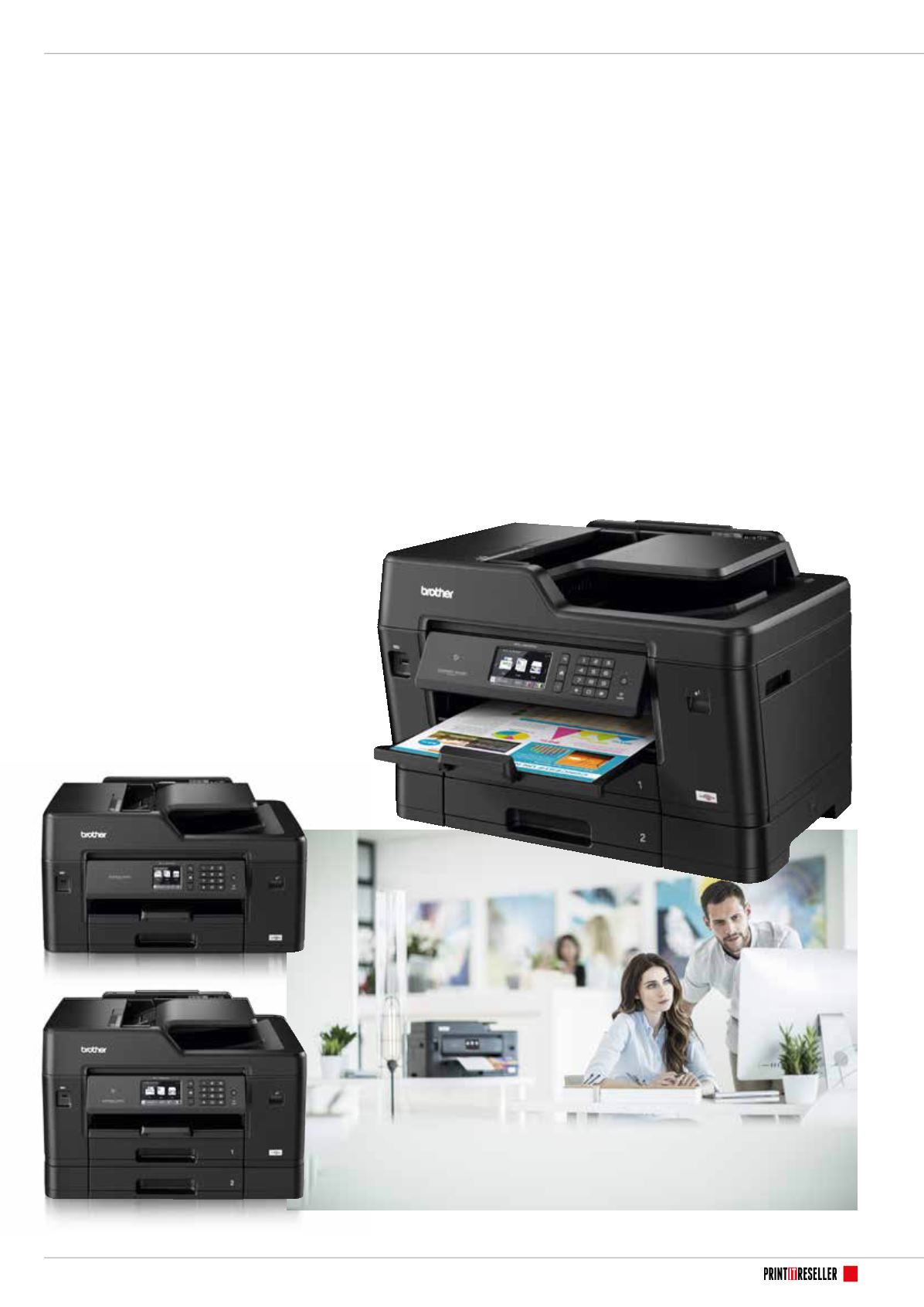
PRINT
IT
RESELLER.UK
23
BUSINESS INKJETS
Brother UK launches new business
inkjets to help partners capitalise
on a growing market
The J5000 and J6000 series offer
full-colour A3 printing and scanning
within compact A4-sized machines,
cementing Brother’s position as
market leader in the A3 business
inkjet category.
The six new models, targeted at SMB
and SOHO end-users, offer low cost,
reliable and efficient printing.
The ICT services provider has introduced
the models to help SMBs increase print
efficiency with fastest-in-class FPOT (fastest
page out time) and FCOT (fastest copy out
time) – as low as six seconds.
Models are durable and reliable,
meaning they can withstand busy office
environments with lots of different users.
All machines also have improved paper
trays to prevent jams.
The machines use high-yield cartridges
to ensure print costs are kept to a
minimum, and also offer better mono and
colour print quality through Pigment Ink
technology.
Both ranges feature a host of built-in
cloud and mobile connectivity options,
including Google Cloud print and AirPrint
as well as Brother’s own iPrint & Scan app,
supporting businesses with collaborative
working environments.
Andy Johnson, Head of Product
Management at Brother UK, said: “We
see real opportunities for partners in the
business inkjet market – its growth in the
past year is a sign of things to come.
“SMB customers are
looking for cost-
effective machines
which they can
trust to deliver,
and that also
work seamlessly
in modern office
environments.
This means they
need to be quick to
support fast-paced
working cultures
Brother UK is launching two new ranges of business inkjet printers in a bid to
help channel partners capitalise on a market which has grown 7% year-on-year.*
and offer a range of connectivity options to
integrate with different devices.
“As market leaders in this category,
we’re confident that our new solutions are
the best out there to help partners meet
the needs of SMB and SOHO end-users.”
/
business-inkjets
J6930 DW
J6930 DW
J6530 DW
*Context data – Jan to Nov, 2015 vs 2016


